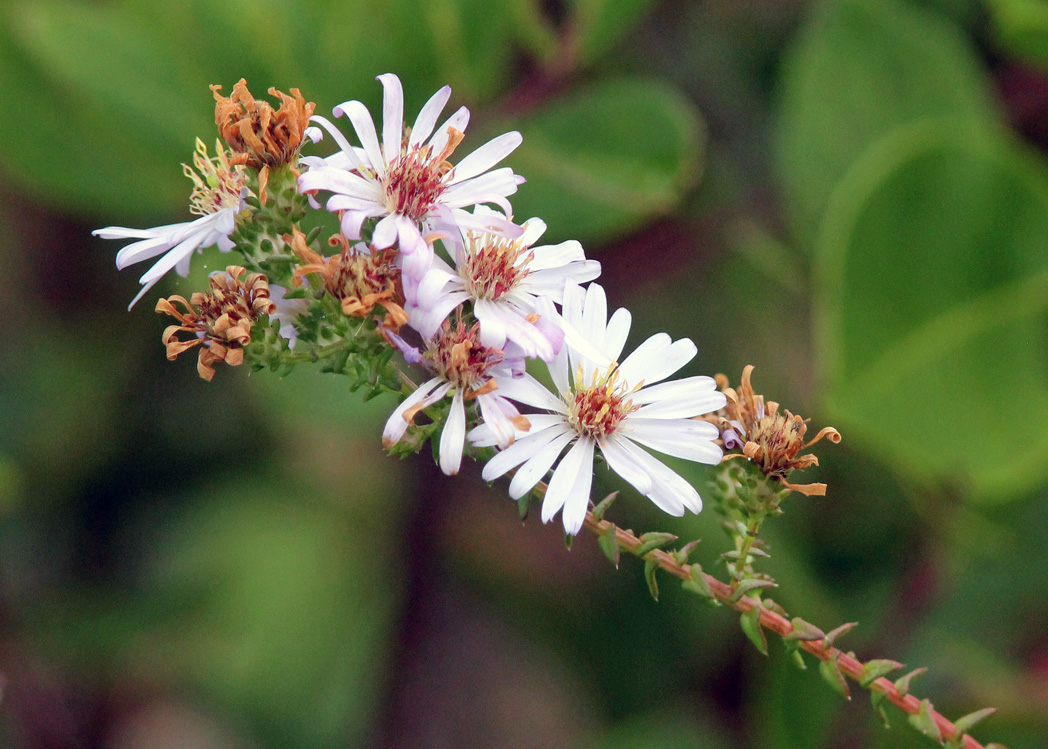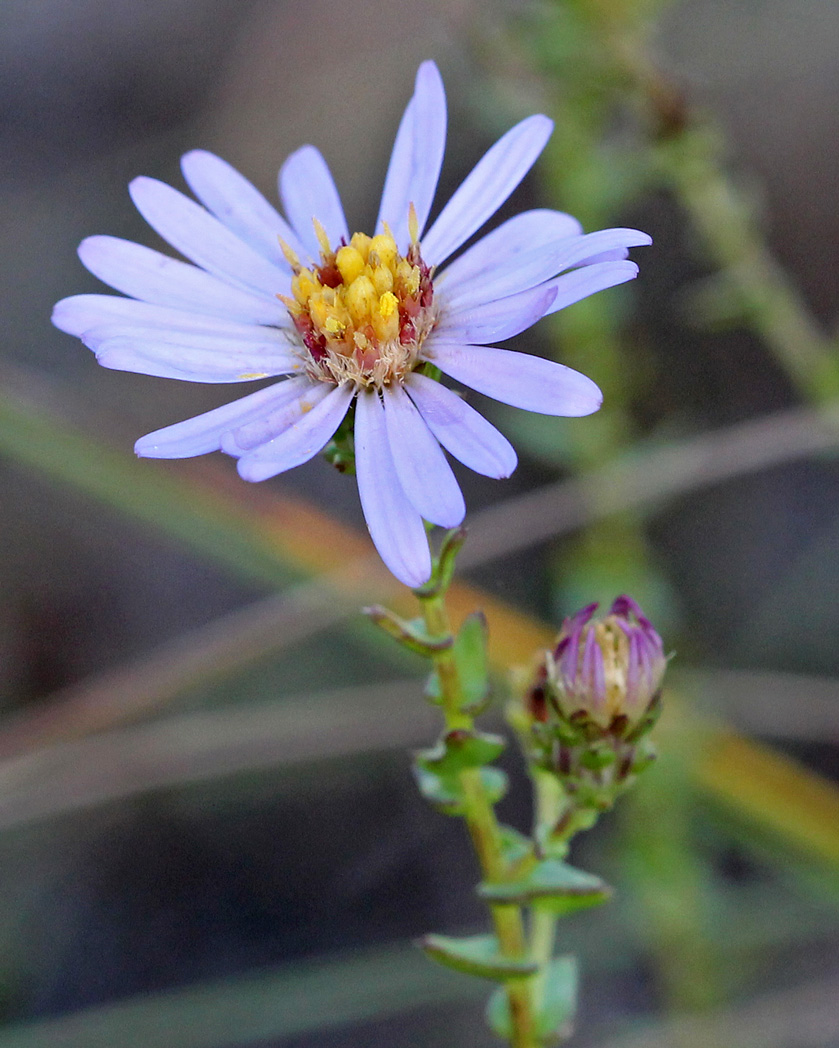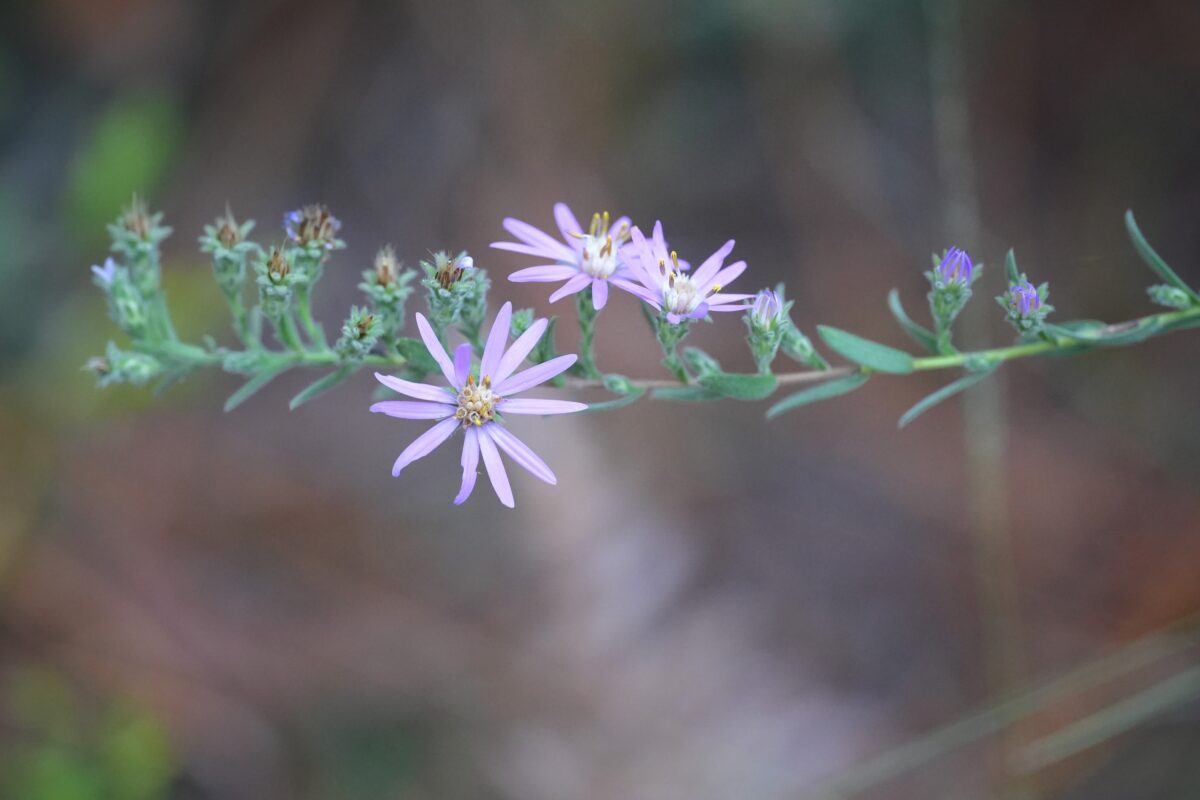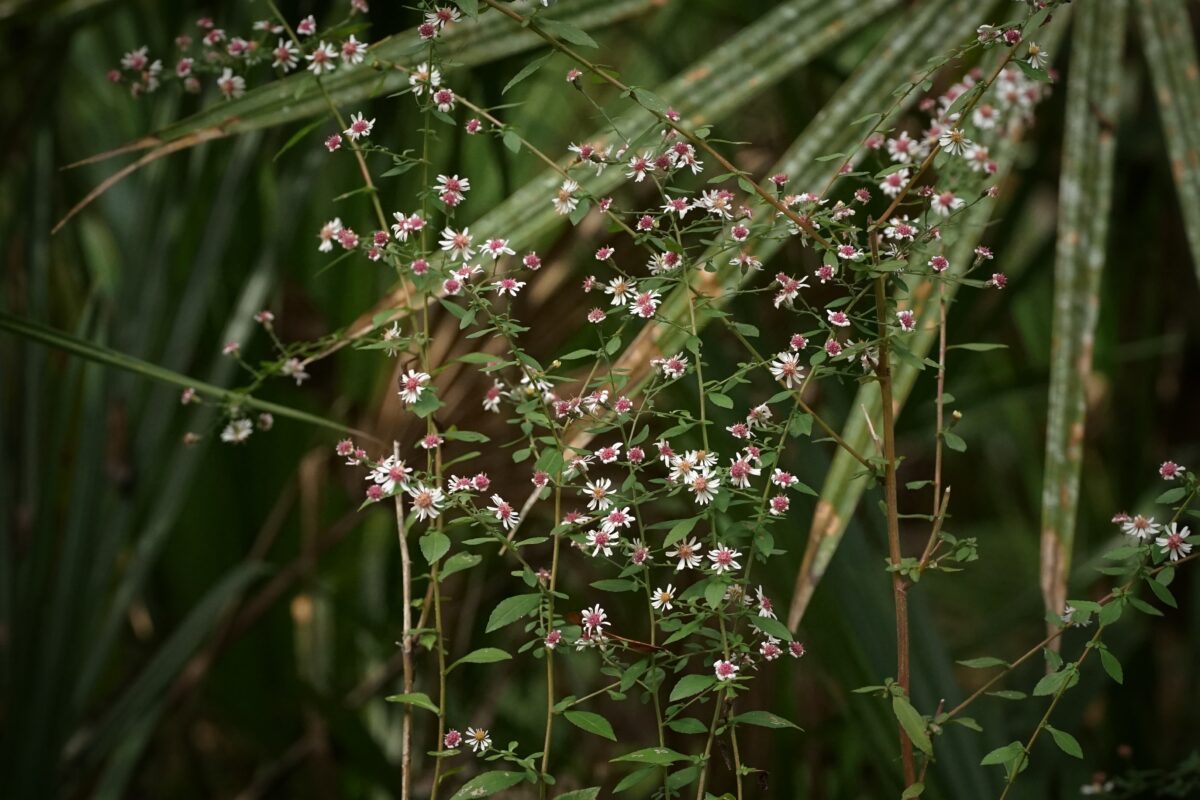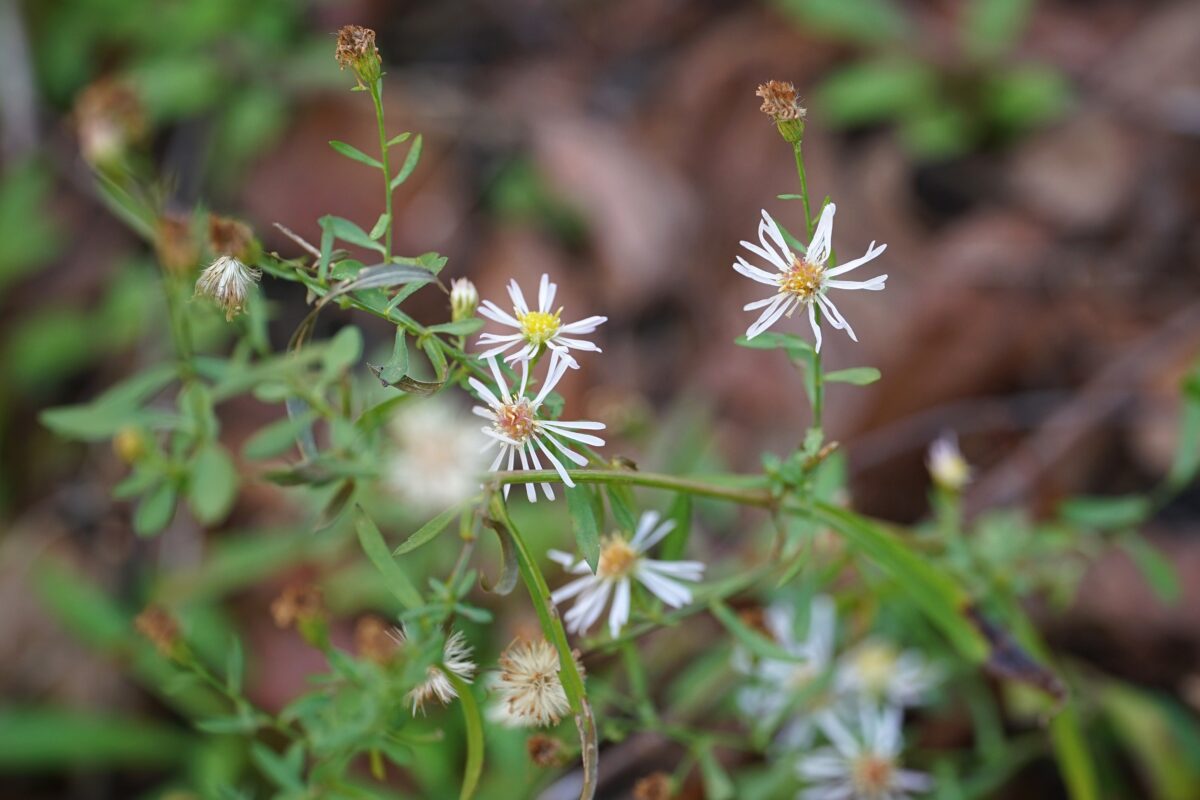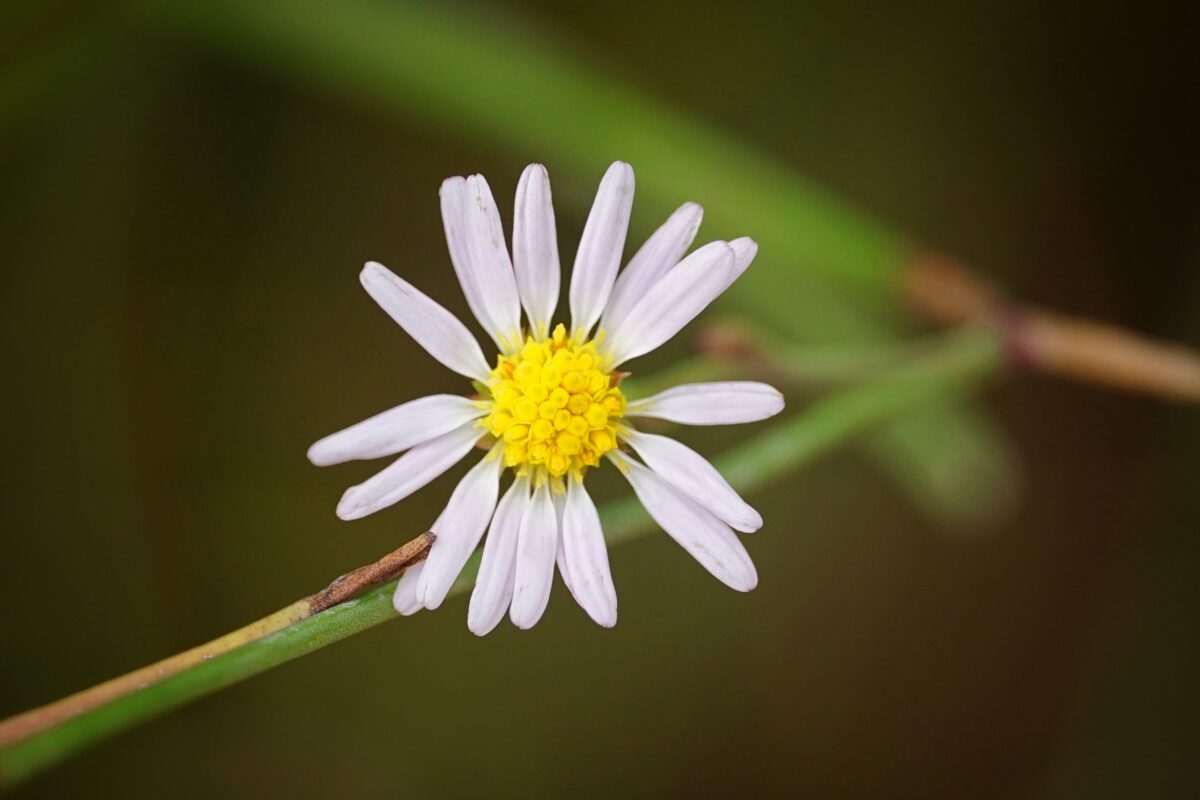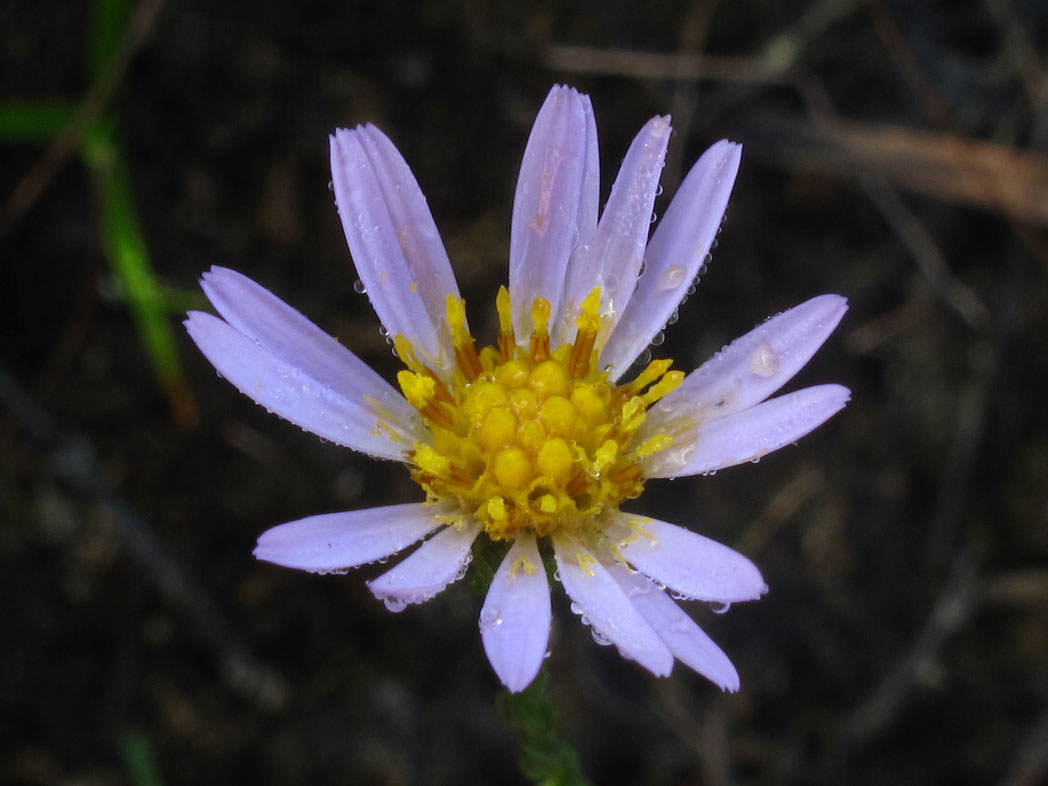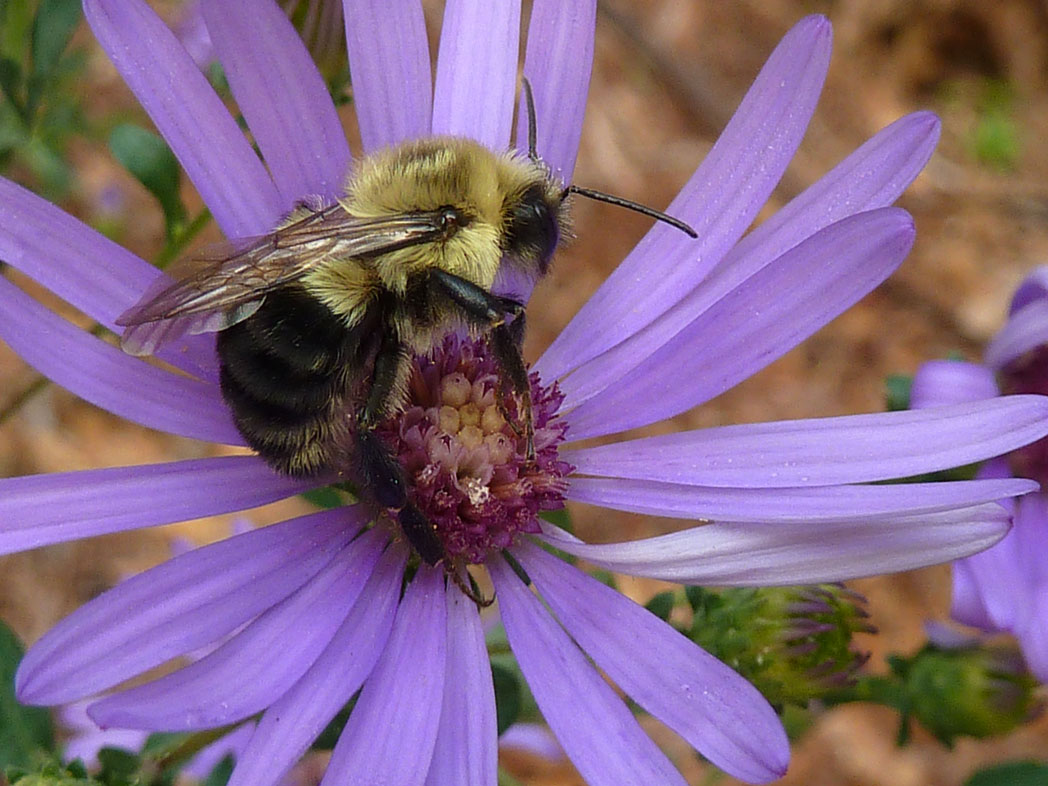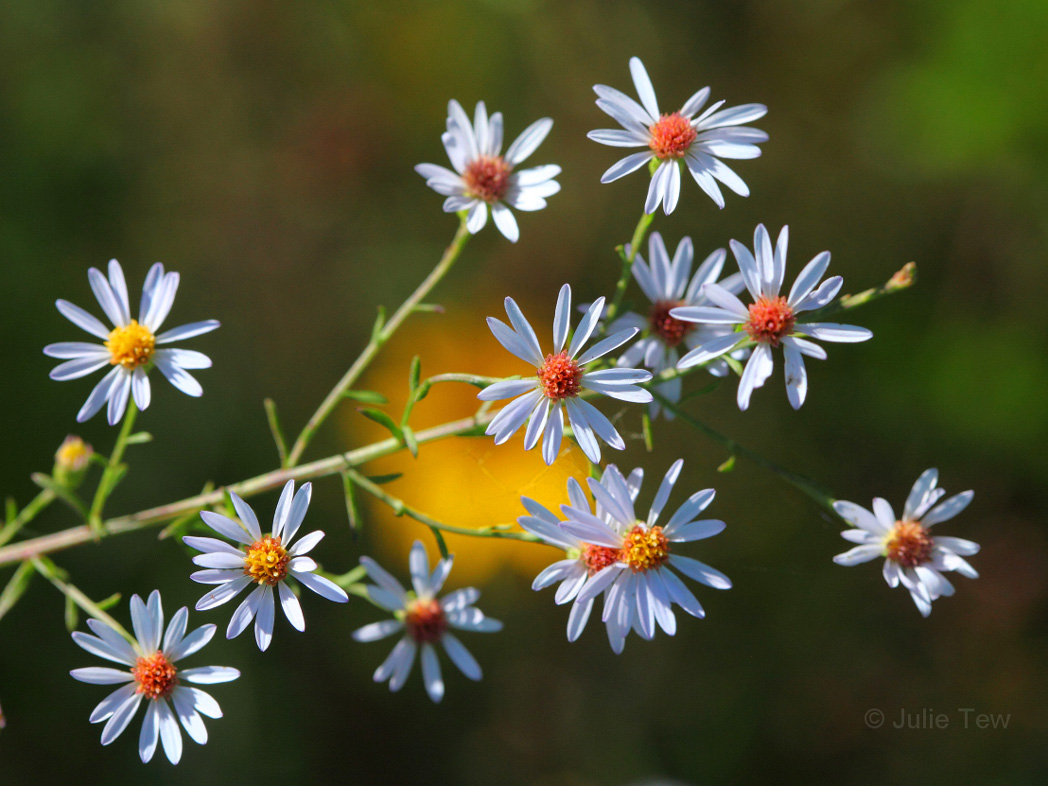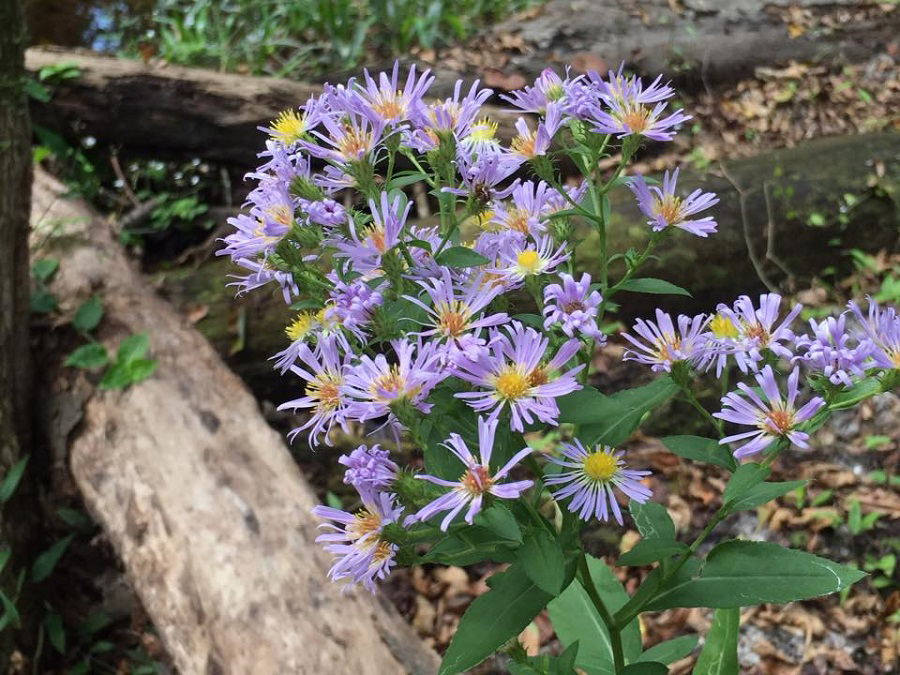Walter’s aster
Pictured above: Walter’s aster (Symphyotrichum walteri) by Mary Keim. Click on terms for botanical definitions. View post as a PDF.
Walter’s aster is an herbaceous perennial wildflower found in sandhills and pine flatwoods. It blooms in late fall and early winter, providing nectar and pollen to butterflies, bees and other pollinators at a time when floral resources are limited.
The compound flowers of Walter’s aster consist of many lavender ray florets surrounding a center of yellow to reddish tubular disk florets. The base of the flowerhead is cupped in green, sepal-like bracts. Stem leaves are small, linear to hastate, and sessile, with acute tips and entire margins. Leaves often curve away from the stem. Leaf arrangement is generally alternate but may be somewhat spiraled. Stems are rough, branched and may be decumbent or erect. Fruits are specialized achenes called cypselae.
The species epithet walteri is an homage to British botanist Thomas Walter (c. 1740–1789), author of Flora Caroliniana, the first North American flora resource to utilize the Linnean binomial taxonomic naming system.
Members of the Symphyotrichum genus were once classified in the genus Aster, which contained over 600 species. All have since been reclassified into 10 different genera. The genus name Symphyotrichum is from the Greek sýmphysis, meaning “growing together,” and thríx, or “hair.” It refers to a basal ring of hairs or bristles (pappi) thought to occur on New England aster (Aster novi-belgii, now Symphyotrichum novi-belgii); however, this characteristic is absent in most modern Symphyotrichum species.
Family: Asteraceae (Aster, composite or daisy family)
Native range: Scattered throughout many Central and North Florida counties
To see where natural populations of Walter’s aster have been vouchered, visit florida.plantatlas.usf.edu.
Lifespan: Perennial
Soil: Dry to moist, well-drained sandy soils
Exposure: Full sun to partial shade
Growth habit: Up to 2′ tall when flowering
Walter’s aster is not commercially available. Visit a natural area to see it.
For information on other Symphyotrichum species, see these resources:

